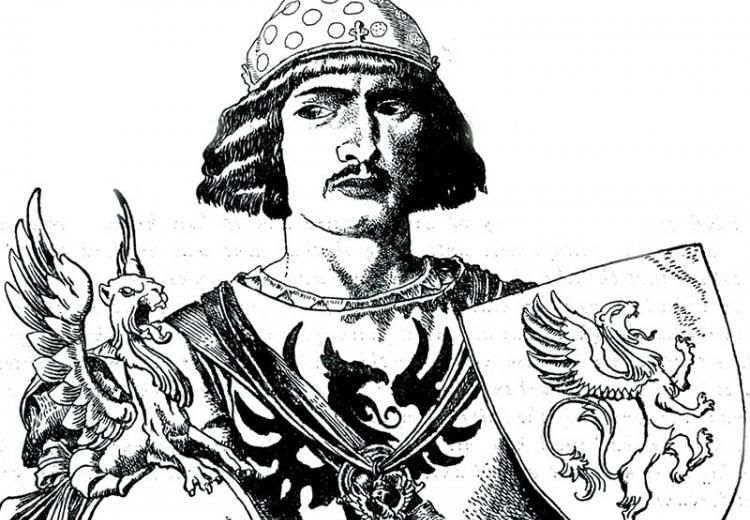Symmetry in Sir Gawain and the Green Knight

"Sir Gawaine the Son of Lot, King of Orkney" from: The Story of King Arthur and His Knights. Pyle, Howard (1853-1911), New York: Scribner's, 1903.
King Arthur, Camelot, Gawain, a bold challenge, a perilous journey, a beheading, an enchantment, and a shape-shifter are the ingredients of Sir Gawain and the Green Knight. For the modern reader, Sir Gawain's tale is riveting even without understanding its symmetry or cultural and historical context. Viewed through the lens of the medieval thinker, reading this Arthurian tale becomes a rich, multi-layered experience.
Gawain and the Green Knight, written in Middle English in the late 1300s, combines two stories familiar to contemporary audiences under the overarching story of Arthur's round table and his feud with his half-sister Morgan le Fay. The first is a beheading tale, which becomes the impetus behind Gawain's quest and frames the second tale, Bertilak's test of Gawain's honor. As Gawain completes his adventures and returns home, the audience is led to consider the true measure of a hero.
This lesson plan explores symmetry in the structure and themes of Gawain, delving into the antagonist's representation of the "duality of nature." In examining knightly virtues, students will measure Gawain's strength as the poem's hero. The lesson explains background information that every medieval thinker listening to a performance of the poem would know, in an effort to put the student into the mind-set of the medieval audience, providing a deeper appreciation and understanding of the work.
Guiding Questions
How does examining the symmetry of form and content in Sir Gawain and the Green Knight illuminate its meaning for the modern reader?
What do Gawain's adventures reveal about knightly virtues?
Learning Objectives
Identify the bob-and-wheel poetic form.
Understand the symmetry within the poem.
Explore color symbolism in the Green Knight.
Connect the cyclical shape of the pentangle with other cyclical aspects of the poem.
Understand the symbolism of Medieval Animals.
Compare Bertilak's hunts to Gawain's temptations.
Explore the poem's approach to the concept of knightly virtue.
